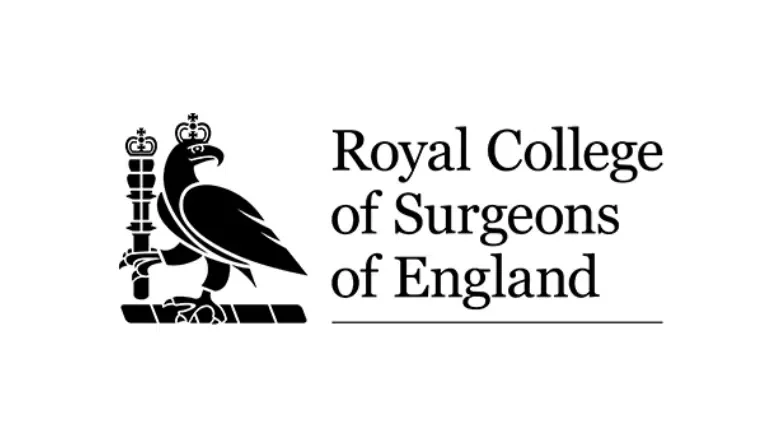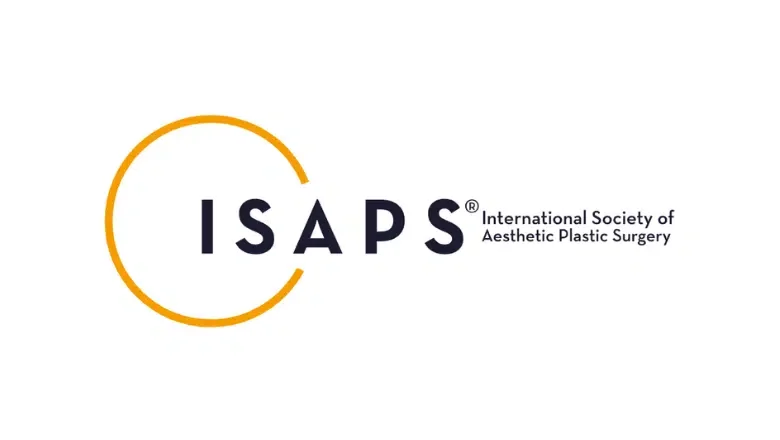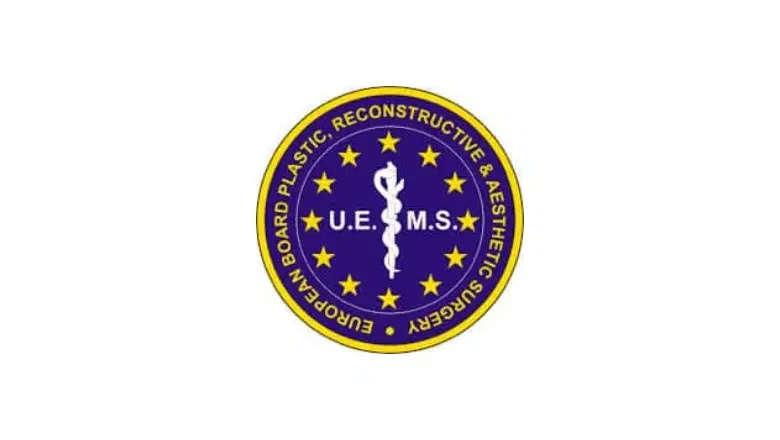Gynecomastia is more commonly referred to as ‘man boobs’ or enlarged male breasts. This is caused by enlarged gland tissues within the male breast. This is most common during infancy or puberty; however, it can appear during adulthood and be a life-long condition. This can be present in one or both of the breasts. Gynecomastia will generally not cause any physical pain. However, you may experience some sensitivity or tenderness.
This should be distinguished from pseudogynecomastia, which is fatty deposits but without enlarged glandular tissues.
RELATED: What you need to know about male chest reduction
The underlying abnormality giving rise to the formation of excessive male breast tissue is a disruption in hormonal levels often associated with an increase in the production of oestrogen. Gynecomastia can be unilateral or bilateral, although men may notice one side being affected more in many cases. There is a range of severity in the different types of gynaecomastia, from a very mild enlargement, which is localised to the nipple and areola area, to breasts that are significantly enlarged and appear very similar in size and shape to large female breasts. Many men may develop localised pain or discomfort and may develop tenderness when the chest is touched. Gynecomastia can be a source of significant distress, with many men eventually developing a loss of self-confidence. As a result, men may actively avoid certain activities, such as going to the beach or swimming and may avoid wearing certain types of clothes, such as tight-fitting T-shirts. In severe cases, it can affect the ability to form close relationships. The condition can present at any stage of life, from newborns to adolescence, middle-aged men and older men. There are several recognised causes of gynecomastia, and one or more causes may be combined as a possible cause.
What causes gynecomastia?
Newborn babies—Mild gynecomastia is prevalent in newborn babies and is related to the high circulating levels of oestrogen, which can be transmitted to the baby by the placenta. Fortunately, this temporary phenomenon settles completely over the first few weeks following birth.
Puberty—Teenage boys experiencing puberty often develop significant hormonal imbalances, which can result in several changes, including the development of gynecomastia. The severity of gynecomastia differs between boys, although, as with newborns, the condition settles down once hormone levels have stabilised. Although short-lived, the condition can take up to 2 to 3 years to settle down completely.
Obesity – men who are overweight or obese very commonly develop gynecomastia. Overweight men often have high levels of oestrogen, and excessive fat can contribute to an enlargement of the male breast.
Older men – with time, men’s hormone levels begin to decrease, which increases the likelihood of developing gynecomastia. Men who are older often tend to be larger, and this also contributes to an increase in oestrogen production that further increases the risk of developing gynecomastia.
Certain medicines – there are several medicines, both prescribed and over-the-counter, which could contribute to the formation of gynecomastia, including drugs used to treat depression and heart conditions, antibiotics, anti-cancer drugs and drugs for reducing acid reflux.
Recreational drugs – common causes of gynaecomastia include men who take certain drugs. Anabolic steroids commonly taken by weightlifters can also cause gynecomastia.
Medical conditions – there are several medical conditions, including liver disease, kidney disease or certain tumours which secrete hormones such as oestrogen, lung cancer or tumours of the endocrine glands, including both the adrenal gland and the pituitary gland.
Hereditary factors – Klinefelter syndrome is a genetic condition involving the formation of a second X chromosome (XXY). However, it’s important to bear in mind that the prevalence of this condition is extremely rare.
Conditions of the male testicle – cancer of the testes or chronic infection affecting the testicles is a recognised cause of gynecomastia.
Although the vast majority of cases of gynaecomastia are harmless, it’s important to undertake a full medical assessment by your GP to rule out more serious conditions. After taking a medical history and performing a physical examination, your doctor may wish to undertake blood tests or an x-ray of the breast. Sometimes, a biopsy may be required to rule out malignant change. The vast majority of gynaecomastia cases can be confidently diagnosed without the requirement for further diagnostic tests.
It is commonly misunderstood that gynecomastia is linked with breast cancer. However, this is not correct. All men must seek urgent medical attention if they do discover a palpable mass in their breasts. The optimum treatment of gynaecomastia is dependent on the age at which it presents itself. Most cases should be resolved without any active treatment for newborn babies and teenage boys. Men who are significantly overweight or obese can benefit from eating a healthy diet and exercising regularly to improve the appearance of gynecomastia. One of the best interventions for a healthy diet involves reducing sugary and fatty foods. Excess fat deposits often develop in the chest area of men who have a sedentary lifestyle. In some cases, especially in cases of fatty gynecomastia, intense and regular physical exercise can help contour the chest wall to build muscle mass with simultaneous fat reduction. Men who are serious weightlifters may find that excessive lifting of weights may worsen the appearance of the condition as the enlarged chest muscle acts to push the extra male breast tissue outwards and accentuate the deformity.
RELATED: How much does male breast reduction surgery cost?
Diet and exercise, in many cases, are highly beneficial, and we would always recommend all men follow a healthy lifestyle; however, no amount of exercise will remove enlarged glandular tissue. Excess fat can be removed with regular exercise and healthy eating. The only effective treatment for removing enlarged glandular tissue is surgical treatment. Some men may take prescription medication for the treatment of a medical condition. If this is thought to be the cause of the gynecomastia, then you should book an appointment with your GP to determine if any alternative medicines can be prescribed. In all cases, you should not stop taking your medication unless you have been instructed to do so by your doctor.
RELATED: Does exercise prevent gynecomastia?
Can you get rid of gynecomastia on your own?
Whether gynecomastia goes away on its own depends on the condition’s underlying cause. For young teenage boys who may be experiencing gynecomastia, we would recommend waiting to see if gynecomastia goes away on its own. It may be useful to increase exercise levels to help remove adolescent-related body fat and help you feel more comfortable with how you look. Physical exercise, including weight training, can help reduce the appearance of gynecomastia. We would advise against any drastic measures for young, growing men who may be experiencing gynecomastia.
Adult men may be able to get rid of gynecomastia on their own, but this will depend on whether they have pseudogynecomastia or true gynecomastia. It may be possible for men with excess chest fat to get rid of this stubborn fat with increased physical exercise levels and a healthy diet, although this will not work for everyone. For men who may have an underlying hormonal imbalance or medical condition that could be affecting levels of oestrogen and male hormone, we would recommend consulting with your GP for further investigation. They may refer you for further testing, including an ultrasound scan to determine the underlying cause of your gynecomastia.
What should I do if gynecomastia does not go away on its own?
In some cases of gynecomastia, the condition may not go away independently, and you may require gynecomastia surgery. Here at Centre for Surgery, our surgeons are highly skilled in carrying out gynecomastia surgery. We carry out hundreds of gynecomastia removal cases each year at our Baker Street clinic using advanced surgical techniques. Gynaecomastia surgery is designed to reduce the excess of breast tissue, fat, and skin to achieve a more masculine-looking chest. For men who are in good physical and mental health and have excess breast tissue, gynecomastia treatment can be highly effective if the condition has not gone away on its own.
What is the best treatment for gynecomastia?
There are no recognised non-invasive or non-surgical treatments for gynecomastia that are known to be effective, including both herbal remedies and topical creams or gels. For men who have confirmed hormonal imbalance, prescription medication can be prescribed to treat gynaecomastia, and this is best done under the supervision of a specialist endocrinologist. In most cases, the only effective permanent treatment for gynecomastia is male breast reduction surgery. Centre for Surgery is a recognised centre of excellence for the treatment of all types of gynaecomastia, from mild to severe.
RELATED: The Transformative Effects of Gynecomastia Surgery
The procedure generally consists of two parts. The first part involves liposuction to remove excess fat and contour the chest. The second stage involves the surgical removal of any residual glandular tissue by making a semi-circular incision around the lower part of the areola, also known as Webster’s incision. In the vast majority of cases, there is no requirement for wound drains to be placed. Any incisions after male breast reduction surgery are both small and well concealed. A tight-fitting compression garment will be placed at the end of the procedure. Male gyno surgery is a highly effective permanent treatment for gynecomastia. Our plastic surgeons have many years of experience treating gynecomastia at Centre for Surgery in London. Speak to one of our friendly and knowledgeable patient coordinators today to book a face-to-face consultation at our state-of-the-art Baker Street clinic.
How can I tell the difference between gynecomastia and chest fat?
This is one of the most commonly asked questions, and men often seek the most effective treatment to get rid of ‘man boobs‘. Many men often feel increasingly self-conscious about their prominent chests. They usually avoid taking off their shirt whilst on holiday or may avoid wearing fitted clothing, which may accentuate the appearance of gynecomastia. Here, we describe the key questions to identify gynecomastia vs chest fat.
RELATED: Gynecomastia vs Chest Fat – How to Tell the Difference
How old are you?
Many young men may develop excess fat or glandular tissue on their chest just before puberty. Surgery for gynecomastia should be avoided in boys who are going through puberty, as the condition will settle down on its own without any further treatment.
Once puberty has passed, hormonal imbalance will return to normal, and the risk of developing gynecomastia can be minimised by eating healthily and doing physical exercise. Most boys who approach the age of 16 are often free of gynecomastia.
Later in life, hormonal changes may result in many older men developing prominent breasts due to a natural fall in male hormones with age. This occurs more commonly in men who are overweight or obese.
Are you overweight or obese?
A clinical assessment from a doctor can often determine whether you have true gynecomastia or simply excessive chest fat. Men who are overweight or obese will have a higher proportion of excess chest fat than slimmer men. The percentage of body fat can often be determined with body fat analysis. This may identify leaner men who may have gynecomastia even though they have a low percentage of body fat. This may be due to lower levels of muscle mass and an increased amount of subcutaneous fat. An elevated lipid profile may also be associated with an increased amount of chest fat due to excessive cholesterol levels.
Do you have any medical conditions?
Certain medical conditions may cause gynecomastia due to an underlying hormonal disturbance. This often develops in men who have hyperthyroidism or have cancer of the pituitary gland or testicular cancer, resulting in the secretion of excessive oestrogen. Men who drink excessively may develop cirrhosis of the liver, and this is also linked with the development of gynecomastia.
Have you had a blood test to check your hormone levels?
Many men may not know they have a hormonal disturbance, and very often, this is detected from a blood test to measure hormone levels. A blood test will be able to measure levels of hormones and is usually taken in the morning as male hormones are at their highest level in the mornings.
Do you eat healthily?
Men with a higher proportion of subcutaneous body fat are more likely to have excess fatty tissue develop in the chest, even though they may be of a normal body mass index. The key to reducing chest fat is to eat healthily with plenty of fruits, vegetables, seeds, grains, avocados and lean protein sources. Avoiding energy-dense and processed foods will help to reduce chest fat.
Are you physically active?
Carrying out regular physical exercise involving a combination of cardiovascular exercise and resistance training will help to burn body fat and tone your chest muscles.
Do you drink excessive alcohol or take recreational drugs?
Men who drink alcohol excessively and take recreational substances, including cannabis, are at a higher risk of developing gynecomastia. Taking recreational substances can also cause other health risks, and we would advise consulting with your GP to access a specialist substance misuse service.
Who can have treatment for gynecomastia?
Prior to having male breast reduction surgery, you should try and lose weight through a healthy diet and exercise regime. You will also need to stop smoking up to six weeks prior to undergoing surgery and avoid smoking directly after the procedure. This will help avoid any complications you may experience during the recovery period.
RELATED: Male chest reduction surgery in London
There is no set age for this procedure – anyone over 18 years old is eligible. However, it is important to keep your skin elasticity in mind. Older men will have less skin elasticity and, therefore, may not experience results as satisfactory as those of younger patients.
Treatment for gynecomastia is not always necessary if it is caused by puberty, as this will generally resolve itself within three years.
How is gynecomastia treated?
There is a range of treatment options for gynecomastia. Medication is sometimes considered an option. However, the enlarged tissue may become scarred, making medication useless. However, if these methods do not work, you may wish to have a surgical male breast reduction.
RELATED: How can you get rid of Gynecomastia without surgery?
The most common method for male breast reduction involves a method of liposuction known as PAL lipo. This is an advanced liposuction method that is far safer than older, traditional methods.
Unlike other methods, PAL lipo involves no heat. This means there is less damage to the skin and tissue, meaning there are fewer side effects during the recovery period. PAL lipo involves three stages:
- The fat globules are separated – this helps to avoid damaging the blood vessels and stromal network.
- An incision is made – in the case of gynecomastia, the incision is made under the armpit. A small cannula is inserted, and the fat is removed.
- The remaining layer of fat is equalised to help give you more natural, smooth results.
While some of the enlarged gland tissues can be removed using the PAL lipo method, most of them will require surgical excision.
RELATED: What do gynecomastia scars look like?
What is gynecomastia recovery like?
After the procedure is complete, you will be able to return home the same day once the effects of the anaesthetic have worn off.
You will experience some pain and discomfort, which can be managed with appropriate medication. You will be unable to drive for the first 24 hours. You will also have to avoid any strenuous physical activity for the first five days. You will be able to exercise again after six weeks and your normal day-to-day activities after three weeks.
RELATED: What is gynecomastia surgery recovery like?
It is normal to experience some bruising and swelling. However, you will be given a garment which you will be required to wear for at least three days, which will help to reduce the bruising and swelling.
Do you want treatment for your gynecomastia? Centre for Surgery has surgical options. Contact us today to find out more or to book a consultation.
RELATED: UK Gynecomastia Clinics










